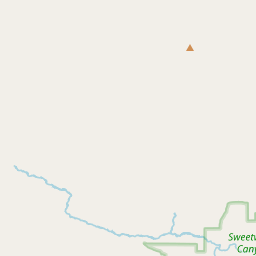Miners Delight: The Booms Broken Promises
Historical marker location:
Atlantic City, Wyoming
( Marker is at the intersection of Atlantic City Road and Fort Stambaugh Loop, on the left when traveling south on Atlantic City Road.)






© OpenStreetMap contributors
The Booms Broken Promises
Loading...
Searching for other points of interest within 3 miles of this location.Wyoming was the last state in the United States to establish a state lottery, which was approved by voters in 2013.
About Fremont County
Fremont County Timeline
Fremont County, Wyoming, has a rich history that stretches back thousands of years. The region was originally inhabited by Native American tribes, including the Shoshone and Arapaho, who lived off the land and relied on hunting and gathering for survival. The first European explorers to reach the area were the legendary Lewis and Clark expedition in the early 1800s. They were followed by various fur traders and trappers who ventured into the region attracted by its abundant wildlife.
In the mid-1800s, Fremont County played a significant role in the westward expansion of the United States. It became an important junction on the Oregon Trail, a major route used by pioneers in their quest for a better life in the western territories. The establishment of the Sublette Cutoff, a shortcut for the Oregon Trail, further increased the county's prominence as a stopping point for travelers.
With the discovery of gold in the late 1860s, Fremont County experienced a significant population boom. Numerous mining towns sprang up throughout the area, attracting prospectors from all over the country in search of fortune. Notable mining districts included Atlantic City, Miner's Delight, and South Pass City. The gold rush era brought great prosperity to the county, leading to the construction of schools, churches, and other infrastructure.
In the 20th century, Fremont County's economy diversified, moving away from mining and focusing more on agriculture, tourism, and other industries. Today, the county is known for its stunning natural landscapes, including parts of Yellowstone National Park, Grand Teton National Park, and the Wind River Range. It continues to be a popular destination for outdoor enthusiasts, offering activities such as hiking, fishing, hunting, and winter sports. Despite changes over the years, Fremont County retains its rugged western charm and serves as a reminder of the rich history and heritage of the American frontier.
In the mid-1800s, Fremont County played a significant role in the westward expansion of the United States. It became an important junction on the Oregon Trail, a major route used by pioneers in their quest for a better life in the western territories. The establishment of the Sublette Cutoff, a shortcut for the Oregon Trail, further increased the county's prominence as a stopping point for travelers.
With the discovery of gold in the late 1860s, Fremont County experienced a significant population boom. Numerous mining towns sprang up throughout the area, attracting prospectors from all over the country in search of fortune. Notable mining districts included Atlantic City, Miner's Delight, and South Pass City. The gold rush era brought great prosperity to the county, leading to the construction of schools, churches, and other infrastructure.
In the 20th century, Fremont County's economy diversified, moving away from mining and focusing more on agriculture, tourism, and other industries. Today, the county is known for its stunning natural landscapes, including parts of Yellowstone National Park, Grand Teton National Park, and the Wind River Range. It continues to be a popular destination for outdoor enthusiasts, offering activities such as hiking, fishing, hunting, and winter sports. Despite changes over the years, Fremont County retains its rugged western charm and serves as a reminder of the rich history and heritage of the American frontier.
Fremont County Timeline
This timeline provides a condensed summary of the historical journey of Fremont County, Wyoming.
- 1807: The area that would later become Fremont County is explored by fur trappers and mountain men.
- 1825: The first permanent settlement, called Fort William, is established by trappers from the Rocky Mountain Fur Company.
- 1861: Fremont County is officially created as part of the Dakota Territory.
- 1868: The Treaty of Fort Bridger is signed, establishing the Wind River Indian Reservation within Fremont County.
- 1870: The town of Lander is founded and becomes the county seat.
- 1871: Gold is discovered in nearby South Pass City, leading to a gold rush and increased settlement in the area.
- 1884: The Shoshone National Forest, the first national forest in the United States, is established in Fremont County.
- 1896: Fremont County becomes part of the new state of Wyoming.
- 1911: The town of Riverton is founded and becomes the second-largest city in Fremont County.
- 1922: Wind River Canyon is opened, providing a scenic route through the county.
- 1950s-1960s: Uranium mining and nuclear testing bring economic development and population growth to Fremont County.
- 1972: The Wind River Indian Reservation is expanded, increasing its size within Fremont County.
- 1980s-1990s: Oil and gas exploration and production become major industries in Fremont County.
- 2005: The Wind River Casino opens on the Wind River Indian Reservation, contributing to the local economy.